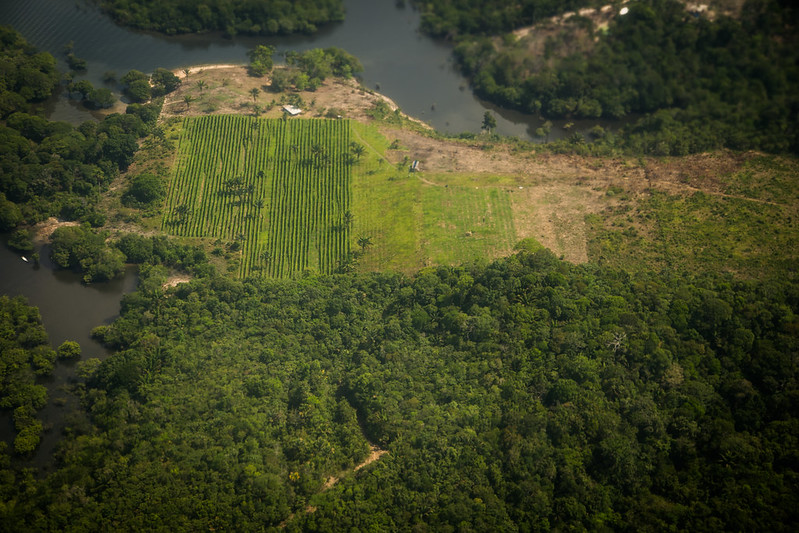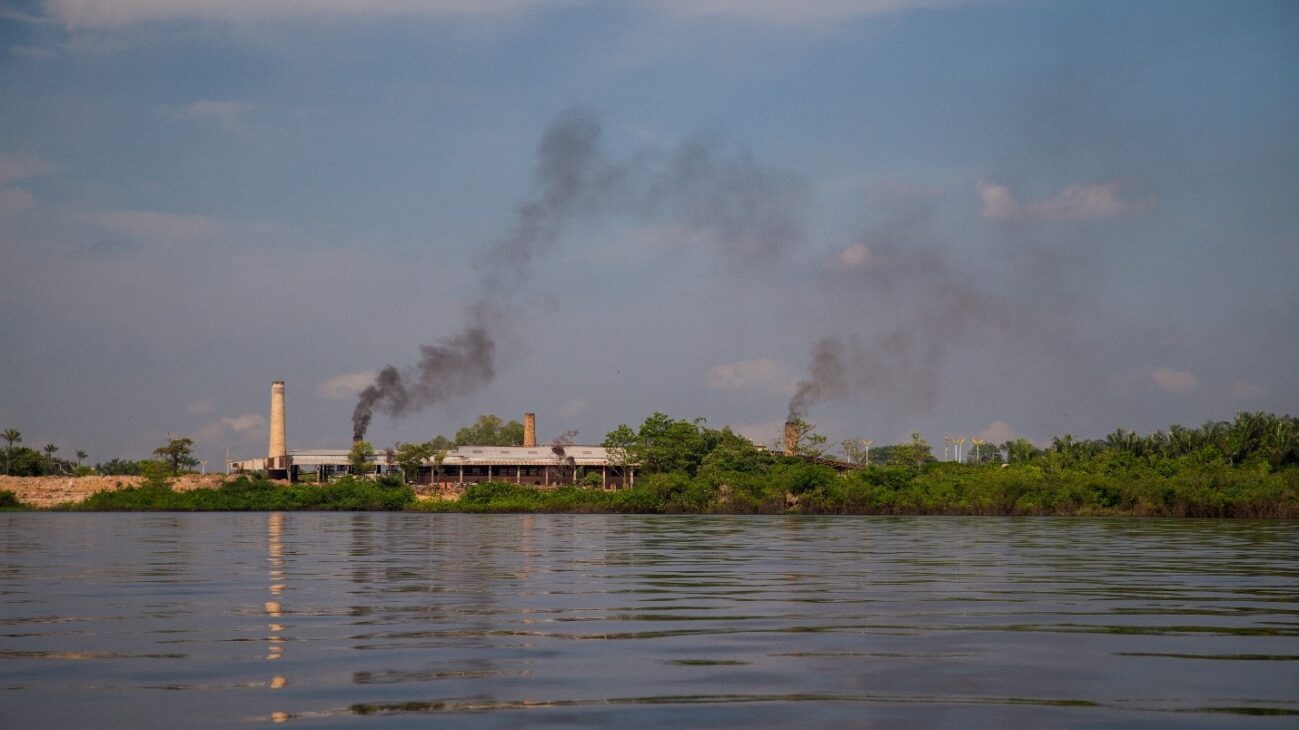Sign up for daily news updates from CleanTechnica on email. Or follow us on Google News!
Ten years later, data gathered in Brazil have proven highly influential across atmospheric science: GoAmazon
Looking out over the Amazon rainforest can seem like viewing a vast sea of trees. Its size, areas of relative isolation, and biodiversity make it a unique environment and natural laboratory. It is the closest that modern observers of the atmosphere can get to measuring preindustrial conditions over land.
For researchers trying to understand how human activities have affected the atmosphere, the Amazon’s relatively unpolluted air can provide critical baseline data. Centuries of industrialization have created a human-influenced background across most of the world. But areas of the Amazon remain sufficiently isolated from polluting activities to serve as effective proxies for preindustrial conditions.
However, the Amazon is not totally isolated. More than just forest, it contains numerous human settlements, such as the city of Manaus. With a population just over 2 million, Manaus is the largest city in the Amazon region. It acts as the sole source of human-driven emissions for a swath of the Amazon, generating a pollution plume that can be monitored.
In January 2014, the U.S. Department of Energy’s (DOE) Atmospheric Radiation Measurement (ARM) user facility and partner institutions began the two-year Green Ocean Amazon (GoAmazon2014/15) field campaign, gathering data in the Amazon near Manaus. The location, a near-pristine environment with a single clear source of human influence, was an ideal natural laboratory.
The ground-based and aerial data gained from GoAmazon have led to over 160 papers since the campaign’s conclusion. That number, which makes GoAmazon the most prolific ARM campaign in terms of journal articles, is only increasing as researchers find new insights from freely available GoAmazon data sets.
Pacific Northwest National Laboratory (PNNL) researchers have played a significant role in GoAmazon, from the original field campaign measurements to subsequent publications. GoAmazon data have enabled scientists to better understand aerosols, model atmospheric processes, and identify the influence of humans on the atmosphere.

Understanding aerosols in a natural laboratory
While GoAmazon produced many types of data, many of the significant scientific conclusions from the campaign center on aerosols—their formation, behavior, and interactions with other atmospheric processes.
“We wanted to know how aerosol particles form in the Amazon,” says campaign co-investigator John Shilling, an atmospheric chemist at PNNL. “ARM’s GoAmazon field site was perfectly positioned to allow us to observe both natural aerosol processes and the influence of human emissions on aerosols. We could study not only how the particles form, but also how they grow.”
Understanding the background of just the forest represented the first step. Because most other isolated areas of the atmosphere are over oceans, GoAmazon revealed important differences in land-based aerosol formation. The data showed that trees play a central role in natural aerosol formation. They release small carbon-based, or organic, molecules into the air that can react with other naturally occurring chemicals.
Of these natural emissions, one stands above the rest. Researchers found in 2017 that isoprene, the most common non-methane organic gas released by plants, was present above the Amazon at levels up to three times higher than observed by other methods.
GoAmazon scientists directly sampled the atmosphere using instruments on ARM’s now-retired Gulfstream-159 (G-1) research aircraft, operated by PNNL for DOE, to determine isoprene concentrations. Most previous data were from satellites, which have relatively low resolution, or stationary instruments, which are limited to measuring a single geographic area. Because much of the world’s isoprene comes from the Amazon, accurately quantifying the emissions is essential to improving models of the atmospheric chemistry above forests.
Beyond understanding the natural processes of forests, the location of the GoAmazon study site directly in the path of pollution from Manaus provided an opportunity to examine how human activities affect natural atmospheric behavior. Researchers found that the pollution plume interacts with the organic molecules released from the trees. The small background particles grow much larger than during periods when the plume is absent. This indicates that different chemistry is at play between the natural and human-caused aerosols.
“In most places, background levels of pollution prevent us from understanding what the preindustrial atmosphere may have been like,” says Shilling. “With the GoAmazon data, we could clearly see the effects of pollution on the aerosol processes.”
When they seek to reproduce observations made in places like the Amazon but in a more controlled environment, PNNL researchers like Shilling look to a tool much closer to home: the Atmospheric Measurement Laboratory. There, inside a chamber filled with gases that represent real-world emissions, they can simulate the processes that govern aerosol formation and growth while changing one variable at a time. By teasing out the chemical interactions at play in Earth’s atmosphere, the chamber reveals new details that inform increasingly robust Earth system models.
Modeling for understanding
Some studies, including work funded by DOE’s Atmospheric System Research program, have combined data analysis and modeling to produce insights unobtainable by either approach alone. Through these types of studies, scientists have identified how emissions from human activities influence aerosol formation and how the increased amount of aerosols affects clouds.
“Doing the modeling was initially quite challenging,” says ManishKumar Shrivastava, an Earth scientist at PNNL. “The models had trouble representing an area with so little pollution. What we found is that while most of the carbon in the aerosols is naturally occurring, the pollution from Manaus significantly affects the chemistry in the atmosphere.”
Shrivastava and his team identified the emission of nitrogen oxides from human activities—known to affect aerosol behavior—as a key player in the massive aerosol enhancements seen in GoAmazon data. The data showed an up to 400% increase in aerosol formation when the pollution plume from Manaus was present compared with when it was absent.
The massive aerosol increase occurs from interactions between the natural organic molecules and nitrogen oxides. The nitrogen oxides can react with the natural emissions, changing the chemical makeup of molecules in the atmosphere and affecting what types of further chemical reactions can occur.

This means there are dramatically more aerosol particles where the pollution plume blows. And all these particles do more than exist. They can affect the clouds.
“Results from GoAmazon fundamentally changed how we understand human influences on aerosol and climate,” says Jiwen Fan, who performed this work at PNNL before becoming the deputy division director for environmental science at Argonne National Laboratory. “Previously, conventional thought was that ultrafine particles, like what we observed in GoAmazon, were too small to affect cloud formation. Our data and model results showed the opposite, opening the door to new science in aerosol–cloud interactions.”
A 2018 study led by Fan showed that these ultrafine aerosol particles can serve as seeds for the numerous water droplets inside storms. The presence of these extra droplets, caused by pollution, can enhance the conversion of water vapor into cloud water and intensify clouds. These findings highlight the potential influence of human-driven emissions on clouds.
The work has continued, with more recent research examining exactly how these tiny aerosol particles grow large enough to seed clouds. The small particles that stem from human-caused emissions can then interact with the naturally occurring rainforest emissions. The organic compounds in the atmosphere then condense onto the small aerosol particles, making them larger.
Some of the larger particles reach the point where they can form seeds for clouds, existing in a much higher number than without human influence. The increase in cloud seeds affects how shallow clouds form. Having additional particles present leads to clouds made of more, but smaller, particles. These clouds scatter more light and are less likely to produce rain. This demonstrates a clear link between pollution and weather above the Amazon.
A proving ground for early career scientists
GoAmazon provided invaluable experience and insights for scientists, including those just starting their careers. Numerous postdoctoral researchers, graduate students, and early career scientists got to participate in the campaign’s two-year field phase.
Some scientists have used GoAmazon data sets to conduct innovative work early in their careers. In 2018, Shrivastava received a DOE Early Career Research Program award to develop better representations of how complex organic aerosol processes affect interactions between aerosols and clouds in models. The unique and detailed data from GoAmazon have played a significant role in Shrivastava’s ongoing project.
“Advancing models is a fascinating challenge,” says Shrivastava. “You start with both a model and experimental data, which generally don’t match. The main question is why. That requires teasing out which processes the model isn’t representing properly.”
For example, Shrivastava led work that identified the role that the coupling of plant biochemistry to cloud convection plays in aerosol formation above the Amazon. Plant biochemistry is an important but overlooked source of emissions of organic gases that condense to form aerosol particles during their transport to high altitudes by clouds.
By better understanding the different processes at play above the Amazon, scientists can improve how regional models simulate the interactions between the Earth’s surface, clouds, and aerosols.
This feature was adapted from an article published on arm.gov.
Courtesy of Pacific Northwest National Laboratory.
Have a tip for CleanTechnica? Want to advertise? Want to suggest a guest for our CleanTech Talk podcast? Contact us here.
Latest CleanTechnica TV Video
CleanTechnica uses affiliate links. See our policy here.





